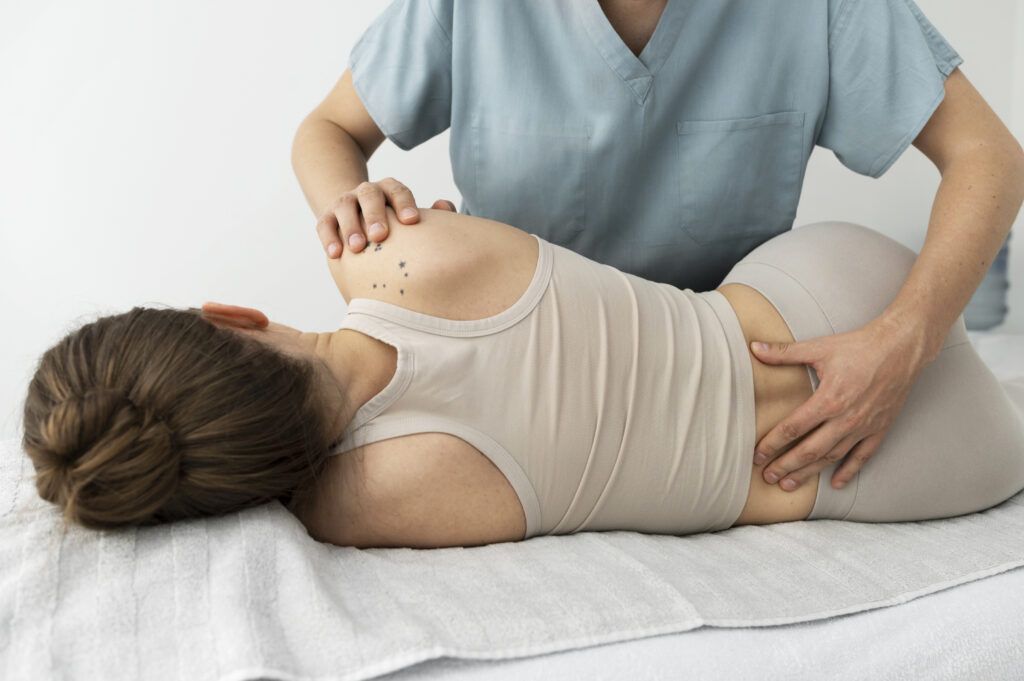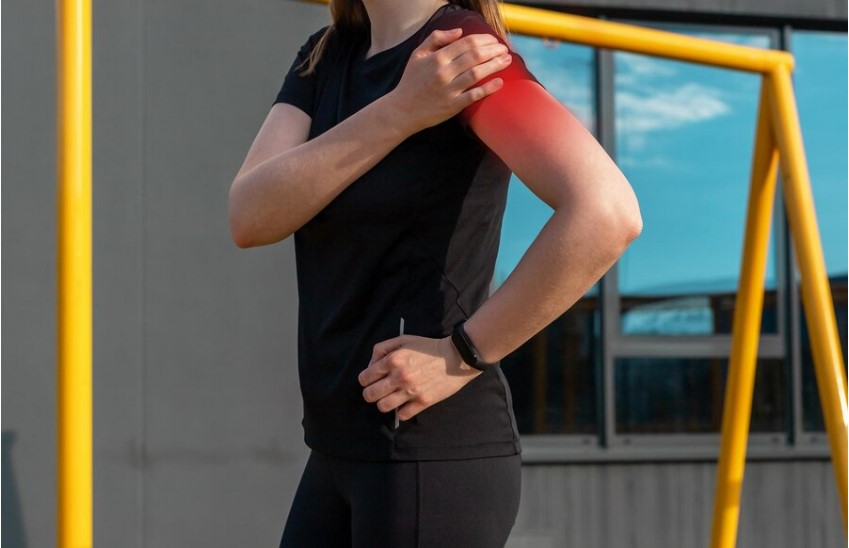When it comes to finding effective ways to relieve pain, you might be surprised by the power of soft techniques. Gentle stretching, therapeutic massage, and mindfulness practices can greatly alter your experience of discomfort. Each method serves a unique purpose, from enhancing flexibility to promoting relaxation and mental calmness. But what if there are even more strategies that can complement these approaches? Exploring the broader spectrum of options could lead you to discover techniques that resonate with your needs and lifestyle.
Gentle Stretching Exercises
Gentle stretching exercises offer a simple yet effective way to alleviate pain and improve flexibility. You don't need fancy equipment or a gym membership to incorporate these movements into your routine. Just find a comfortable space where you can focus on your body and its needs.
Start with basic stretches that target areas where you feel tightness or discomfort. For instance, neck stretches can relieve tension that builds up from poor posture. Slowly tilt your head to one side, hold for 15-30 seconds, and switch sides. This helps release tight muscles and promotes relaxation.
Next, consider your back. A gentle seated forward bend can work wonders. Sit on the floor with your legs extended in front of you, and slowly hinge at your hips, reaching toward your toes. You'll feel a stretch along your spine and hamstrings. Breathe deeply and hold this position for a few breaths.
Don't forget about your hips! Incorporate stretches like the butterfly stretch, where you sit with the soles of your feet together and gently press your knees toward the ground. This opens up your hips and can ease discomfort from sitting for long periods.
Always listen to your body—if something doesn't feel right, ease off. Regularly practicing these gentle stretches can greatly enhance your overall well-being.
With just a few minutes each day, you can create a routine that supports both pain relief and greater mobility.
Therapeutic Massage Techniques
Therapeutic massage can be a game-changer for relieving pain and tension in your body.
You'll discover a variety of popular techniques that not only ease discomfort but also promote overall well-being.
Let's explore the benefits and methods that can help you feel your best.
Benefits of Therapeutic Massage
One of the most effective ways to alleviate pain and promote relaxation is through therapeutic massage. When you indulge in this practice, you're not just pampering yourself; you're also targeting specific areas of discomfort.
Therapeutic massage works by manipulating muscles and soft tissues, which can reduce tension and ease soreness. As you experience the soothing strokes, your body releases endorphins, the natural painkillers that help elevate your mood and provide relief. This process can also improve circulation, delivering oxygen and nutrients to your muscles, which aids in recovery.
You might notice a significant reduction in stress levels, as massage helps lower cortisol—a hormone linked to stress. Moreover, therapeutic massage can enhance your overall flexibility and range of motion. If you've been dealing with chronic pain or muscle tightness, this technique can help break down adhesions and scar tissue, leading to more fluid movement.
Popular Techniques Explained
When it comes to pain relief, understanding various therapeutic massage techniques can empower you to choose the right approach for your needs.
One popular technique is Swedish massage, which uses long, flowing strokes to promote relaxation and increase circulation. It's perfect if you're looking to unwind and reduce tension.
Deep tissue massage, on the other hand, targets deeper layers of muscle and connective tissue. This technique is particularly effective for chronic pain and muscle tightness, as it applies firm pressure to specific areas. If you're dealing with injury recovery or muscle soreness, this might be ideal for you.
Another technique worth exploring is trigger point therapy. This focuses on specific knots in the muscle, releasing tension and alleviating pain. It's especially helpful for headaches and localized discomfort.
Lastly, myofascial release involves gentle stretching of the fascia, the connective tissue surrounding muscles. This method can enhance mobility and reduce pain by addressing restrictions in the fascial system.
Mindfulness and Meditation
Mindfulness and meditation offer powerful tools for managing pain and enhancing overall well-being. By focusing your attention on the present moment, you can create a sense of calm that helps reduce the perception of pain. Instead of getting lost in worries about the future or regrets about the past, mindfulness encourages you to engage with your body and feelings as they're right now.
To get started, find a quiet space where you won't be disturbed. Sit comfortably and close your eyes. Take a few deep breaths, letting your body relax with each exhale. As thoughts about your pain or daily stressors arise, acknowledge them without judgment, then gently bring your focus back to your breath. This practice helps you create a mental distance from pain, allowing you to respond to it with greater clarity.
Another effective technique is guided meditation. You can find various apps and online resources that offer sessions specifically designed for pain relief. These guided sessions help you visualize a peaceful place or focus on body scans that promote relaxation.
The more consistently you practice mindfulness and meditation, the more you'll likely notice a decrease in your pain levels and an increase in your overall sense of well-being.
Yoga for Pain Relief
Yoga serves as a powerful tool for pain relief, combining physical movement, breath control, and mental focus to foster healing. When you engage in yoga, you're not just stretching your body; you're also promoting circulation, reducing tension, and improving your strength and flexibility. These benefits can considerably diminish chronic pain and enhance your overall well-being.
By focusing on your breath, you can create a calming effect that directly impacts your body's response to pain. Techniques such as deep breathing and pranayama enable you to relax your nervous system, which can help alleviate discomfort. You'll find that as you breathe deeply, your muscles release tension, allowing for greater mobility.
Incorporating specific poses into your routine can target areas of pain. For instance, gentle stretches like Child's Pose or Cat-Cow can soothe a stiff back, while seated forward bends may relieve tension in your hips. You don't need to be a yoga expert to experience the benefits; even simple movements can yield considerable results.
Additionally, practicing mindfulness during your yoga sessions can enhance your mental resilience against pain. As you become more attuned to your body and its sensations, you'll gain valuable insights into what triggers your discomfort and how to manage it effectively.
Acupressure and Acupuncture
Building on the holistic approach to pain management, acupressure and acupuncture offer additional techniques for relief. Both methods stem from traditional Chinese medicine and focus on balancing your body's energy, or "qi." By targeting specific points, these practices can help alleviate various types of pain, from chronic back pain to migraines.
In acupressure, you use your fingers to apply pressure to specific points on your body. It's a self-care technique that you can easily incorporate into your daily routine. You can find these points by consulting a guide or using a map of acupressure points.
Press and hold for several seconds, and you may notice a reduction in pain and tension. This technique can be particularly effective for headaches, muscle soreness, and stress relief.
Acupuncture, on the other hand, involves the insertion of thin needles into specific points. While it might sound intimidating, most people find it surprisingly painless. Acupuncture sessions are typically conducted by trained professionals who can tailor the treatment to your specific needs.
Many report not only pain relief but also improved overall well-being after sessions.
Both acupressure and acupuncture can be great additions to your pain management toolkit. They're non-invasive, drug-free options that can enhance the effectiveness of other treatments.
As you explore these techniques, you may discover new ways to achieve relief and support your body's natural healing process.
Breathing Exercises
When you're dealing with pain, breathing exercises can be a game changer.
Techniques like diaphragmatic breathing and guided visualization help you focus your mind and relax your body.
Diaphragmatic Breathing Technique
Often overlooked, the diaphragmatic breathing technique is a powerful tool for pain relief. By focusing on your breath, you can engage your diaphragm, promoting relaxation and reducing tension in your body. This method encourages deeper breaths, which can help lower stress levels and alleviate pain.
Here's how to practice diaphragmatic breathing effectively:
- Feel the support of your body: As you breathe deeply, let your abdomen rise and fall, connecting with a sense of grounding and stability.
- Release pent-up tension: Each exhale provides an opportunity to let go of stress and anxiety, making space for comfort and ease.
- Cultivate a sense of control: With each breath, you can take charge of your body's response to pain, fostering empowerment and resilience.
When you incorporate this technique into your daily routine, you may find that pain becomes more manageable.
It's a simple yet profound way to tap into your body's natural ability to heal and restore balance.
Guided Visualization Practices
Guided visualization practices offer a powerful way to enhance pain relief through focused mental imagery and deep relaxation. By engaging your imagination, you can create soothing mental landscapes that help distract your mind from discomfort.
Start by finding a quiet space where you won't be interrupted. Sit or lie down comfortably, close your eyes, and take a few deep breaths to center yourself.
Next, visualize a peaceful scene—perhaps a serene beach or a tranquil forest. Picture every detail vividly: the colors, sounds, and scents. As you immerse yourself in this imagery, allow your body to relax. Notice how tension melts away with each breath, creating a sense of lightness and calm.
You might even incorporate healing light into your visualization. Imagine a warm, golden light surrounding areas of pain, soothing and healing them. This mental imagery can greatly reduce your perception of pain and enhance your overall sense of well-being.
Practice guided visualization regularly, and you'll likely notice its cumulative benefits. It's a simple yet effective technique that empowers you in your journey toward pain relief, helping you regain control over your body and mind.
Hot and Cold Therapy
Hot and cold therapy offers a simple yet effective approach to alleviating pain and discomfort. You can easily incorporate these techniques into your daily routine, using items you likely already have at home. When you're dealing with pain, applying heat can help relax and soothe tight muscles, while cold therapy can numb sharp pain and reduce inflammation.
Here's how you can use each method effectively:
- Heat therapy: Use a warm towel, heating pad, or hot water bottle to gently apply heat to the affected area. This can increase blood flow, helping to promote healing and reduce stiffness. Just make sure it's not too hot; you don't want to risk burning your skin.
- Cold therapy: A cold pack or even a bag of frozen peas can work wonders. Wrap it in a cloth and apply it to the painful area for 15-20 minutes. Cold therapy constricts blood vessels, which can help decrease swelling and numb the area.
- Alternating methods: Sometimes, switching between hot and cold can provide the best relief. Start with heat to relax the muscles, then follow up with cold to reduce inflammation.
Whichever method you choose, be attentive to how your body responds. You'll often find that these simple techniques can make a significant difference in your pain management routine.
Aromatherapy and Essential Oils
Aromatherapy and essential oils can be powerful allies in your quest for pain relief. These natural remedies harness the therapeutic properties of plant extracts to help alleviate discomfort and promote relaxation. When you inhale or apply essential oils, you engage your sense of smell and skin, triggering responses that can ease tension and reduce pain.
To get started, consider oils like lavender, peppermint, and eucalyptus. Lavender is known for its calming effects, making it an excellent choice for headaches and muscle tension. Peppermint can provide a cooling sensation that may soothe sore muscles and alleviate migraines. Eucalyptus, on the other hand, can help open your airways and ease respiratory discomfort.
You can use essential oils in various ways. Diffusion is a popular method; simply add a few drops of your chosen oil to a diffuser, filling your space with soothing aromas. Alternatively, you can mix essential oils with a carrier oil, like coconut or jojoba oil, and gently massage it into the affected area. This not only helps with pain relief but also promotes relaxation.
Don't forget to practice caution. Always dilute essential oils before applying them to your skin, and perform a patch test to check for allergies. If you're pregnant or have underlying health conditions, consult a healthcare professional before using essential oils.
Tai Chi and Qigong
Tai Chi and Qigong offer two gentle yet effective approaches to pain relief that can enhance both your physical and mental well-being. These ancient practices combine slow, flowing movements with focused breathing and meditation, making them accessible to people of all ages and fitness levels.
You'll find that engaging in these techniques can't only alleviate pain but also promote relaxation and a sense of inner peace.
As you practice Tai Chi or Qigong, you'll notice physical and emotional benefits, including:
- Improved flexibility and strength: The gentle movements help to stretch and strengthen your muscles, reducing stiffness and discomfort.
- Reduced stress and anxiety: The meditative aspect encourages mindfulness, allowing you to let go of tension and focus on the present moment.
- Enhanced overall well-being: By connecting your body and mind, you cultivate a deeper sense of harmony within yourself.
Research shows that consistent practice can lead to significant pain relief, especially for conditions like arthritis and chronic back pain.
You don't have to be an expert to start; simply finding a class or following online tutorials can set you on the right path.
The beauty of Tai Chi and Qigong lies in their adaptability. Whether you're standing, sitting, or even lying down, you can enjoy the benefits regardless of your circumstances.
Conclusion
Incorporating these soft techniques into your daily routine can greatly enhance your pain relief journey. Gentle stretching, therapeutic massage, and mindfulness practices like yoga and breathing exercises not only alleviate discomfort but also promote overall well-being. Don't forget the benefits of hot and cold therapy, aromatherapy, and ancient practices like Tai Chi. By exploring these methods, you'll empower yourself to manage pain more effectively and improve your quality of life. Start today and discover what works best for you!



